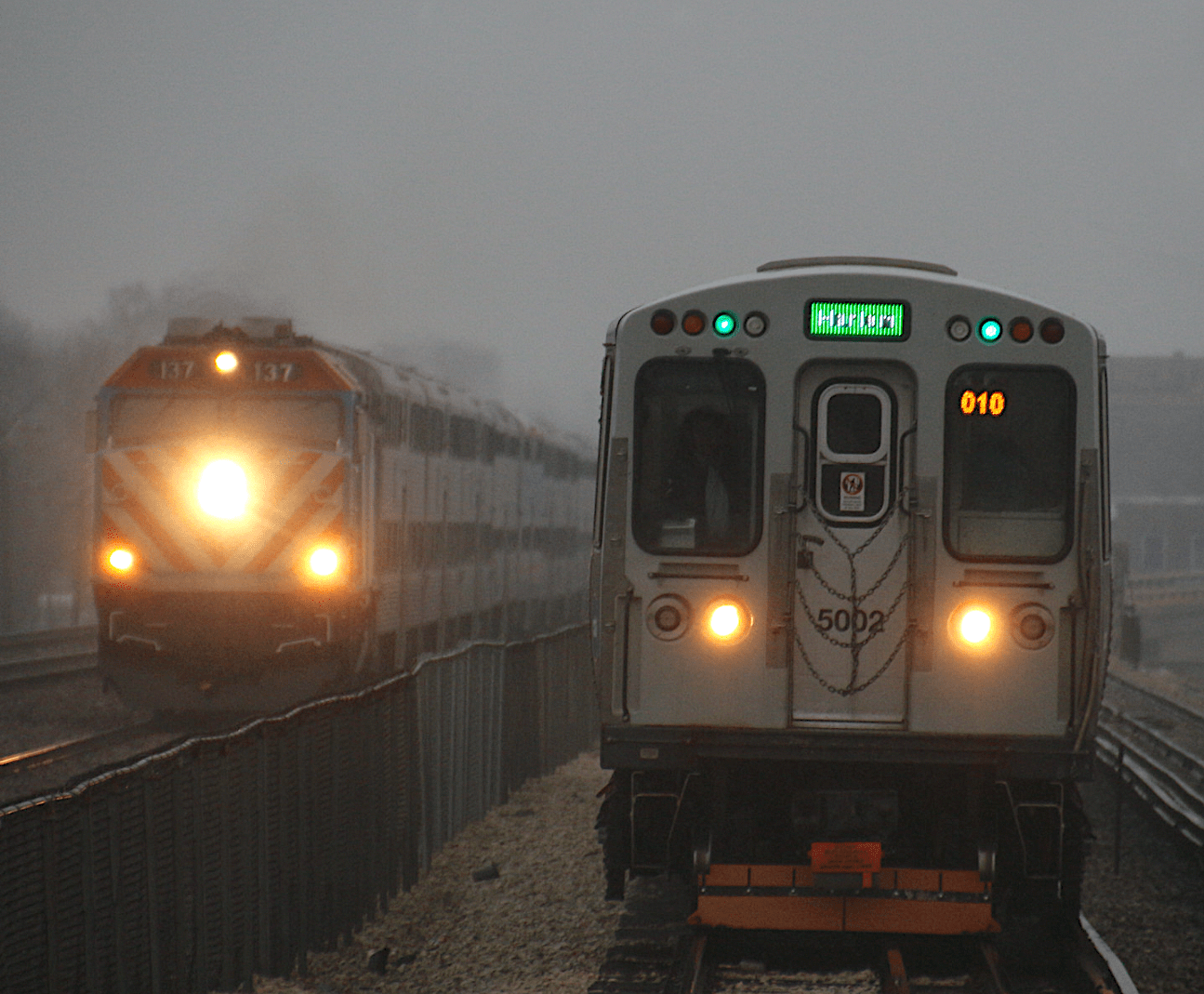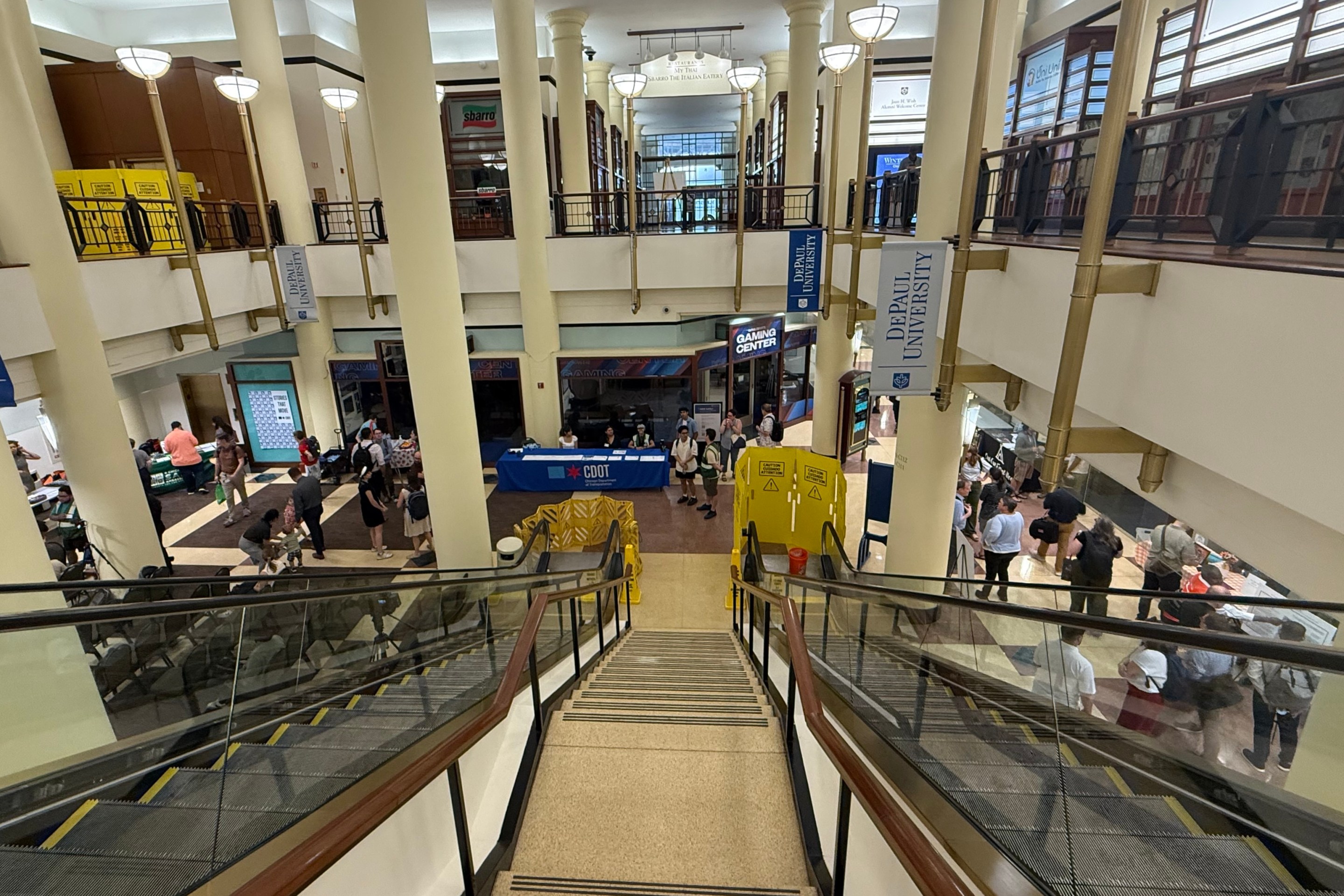There's a cash conflict going on between Chicagoland's three main transit agencies.
CTA and Pace officials have objected to the Regional Transportation Authority's proposal for divvying up American Rescue Plan Act stimulus funds between those systems and Metra. The RTA board was supposed to take a final vote on the plan Wednesday during a special meeting, but the vote was pushed back to Friday at 11:30 a.m., to give the RTA board and the CTA, Pace, and Metra boards time to resolve the issue.
While the RTA received the ARP funds back in March, the agency has been taking its time deciding how the funds should be split. Earlier this fall, the board agreed to give CTA and Metra enough funds to cover their 2022 budget deficits, and planned to figure out how to split the rest of the money later.
But in September 2021, the Federal Transportation Authority put out a notice inviting transit agencies to apply to a $2.2 billion grant program to provide additional ARP funding. There are several conditions to receive a grant, however. A transit agency has to have spent at least 90 percent of the funding it got through the the first stimulus package, the Coronavirus Aid, Relief, and Economic Security Act, and all of the ARP funding must be allocated by the application deadline of November 8. To meet the deadline, the RTA decided to split the remaining funds based on pre-pandemic fare estimates for 2022.
This meant that, under the proposed allocation that went before the RTA Board on November 3, the CTA would get $891.4 million, or 60 percent of all ARP funding; Metra would get $543.6 million, or 36 percent of the funding; and Pace would get $62 million, or 4 percent of the funding. Pace executive director Rocky Donahue strongly complained about the split, arguing that it would hurt his agency’s ability to improve services, while also protesting that RTA was penalizing Pace for making service cuts. In addition, CTA chief Dorval Carter felt that Metra got too much funding, urging RTA to split $40 million of the Metra funding between the CTA and Pace.
While RTA board members representing the Metra-reliant collar counties urged the board to adopt the formula as is, directors representing Chicago pushed back, while suburban Cook County board members were split on the issue. The board ultimately agreed that taking two days to improve the ordinance would help, and that whatever they come up with should have language allowing RTA to change the allocations further down the line.
Background
All three stimulus packages included funding for public transportation. Under the CARES Act, the RTA got $1.4 billion, with the CTA getting $817.5 million, or 58 percent of the funding; Metra getting $479.2 million, or 34 percent of the funds; and Pace getting $112.8 million, or 8 percent of the funds. While Metra and Pace made service cuts and reductions that haven’t been fully reversed, the CTA didn’t cut service at all, at least on paper, although there have been reports of longer headways between buses and trains.
When it came to the 2021 Coronavirus Response and Relief Supplemental Appropriations Act funding split, the RTA pursued the strategy of allocating the funding based on which routes served the most vulnerable, transit-dependent populations. That formula therefore prioritized the CTA over Metra and Pace. In response to the complaints from the later two agencies, RTA officials promised that this policy wouldn't necessarily be in place for future stimulus allocations.
As with the other stimulus packages, the RTA got the ARP funding for the entire Chicago-Northwest Indiana-Southeast Wisconsin metropolitan statistical area which, in addition to the six Illinois counties that make up the RTA, includes Indiana’s Lake and Porter counties and Wisconsin’s Kenosha County. This means that in addition to splitting the funding between three service boards, the RTA has to negotiate with the Northwestern Indiana Regional Planning Commission, the Northern Indiana Commuter Transportation District (which runs the South Shore Line), and the Southeastern Wisconsin Regional Planning Commission.
NIRPC provides funding for NICTD, as well as Northwest Indiana’s four fixed-route bus systems and five demand-response providers. SEWRPC provides funding for transit systems in Kenosha County, Racine County and Milwaukee County.
The RTA got $1.5 billion in ARP funds overall. Under the proposed agreement, $3.5 million of that would go to NIRPC and NICTD, while $175,609 would go to SEWRPC.
There is some overlap between RTA and other agencies’ service areas. The South Shore Line provides the only passenger rail service in the Hegewisch neighborhood on Chicago’s southeast edge, and it uses Metra Electric tracks between 115th Street and Millennium Station. Metra’s Union Pacific North line serves Kenosha; ChicaGo Dash provides commuter express service between Valparaiso, Indiana, and the Loop; and Pace routes 350 and 364 terminate near downtown Hammond.
Pace and CTA Objections
Donahue, who is retiring from Pace at the end of the year, didn’t mince words at the board meeting, saying that he felt that the smaller allocation was like Pace “being punished for being fiscally responsible during the pandemic” and “not continuing to operate unproductive service [during the pandemic] and, quite honestly, not bringing back more unproductive service into our 2022 budget.” He also argue that Pace needs more funding to build back better.
“Approving this allocation is basically accepting that there's no additional need for transit in the suburbs, that it's okay to invest only 4 cents on the dollar to the one service board that primarily serves the suburbs, and that it's somehow responsive and okay to invest 96 cents [on the dollar] in transit that primarily supports the central business district and the rest of the city of Chicago,” he said.
Donahue added that Pace would use the funding to invest in service in major cities such as Aurora and Naperville, as well as county-wide dial-a-ride programs in Lake and Will counties. “By investing 4 cents into Pace, you're basically saying to the region that the transit system you have in the suburbs is all you'll ever have. Forget about innovative services, forget about expanding.”
Carter said that he objected to Metra getting around $40 million more than the commuter railroad previously stated it needed to fill its budget gap. “I would also point out that the equity of this kind of decision is also very poor. Both CTA and Pace carry customers the number of which is viewed as low-income, minority, [members of underserved] communities, transit-dependent, who rely on our services to get to their jobs, to healthcare, to things that are critical to their ongoing existence.”

Both Donahue and Carter also complained that the RTA barely negotiated ARP allocation with their respective agencies. “We sat on this money for five months, we had limited conversations and negations, and now we have a special board meeting to hurry up and ratify it,” Donahue said.
When asked whey would like to do with $40 million instead, Carter said he would give $8 million to Pace and $32 million to CTA. Donahue said he would like the funding to be split using the same method as RTA usually allocates state funding, which would mean Pace would get 12 percent of the funds.
Metra executive director Jim Derwinski said that the railroad would use the funding to improve service frequency, continue to experiment with reverse-commute and off-peak service, and cover wage and benefits increases for unionized employees. “One thing that we learned during the pandemic is that the service frequency is one of the core reasons passengers choose Metra. All too often, I hear from employees downtown that our people would be coming back to the office, but the train [service isn’t there]. So we know we have to increase service levels to start putting passengers back in.”
Derwinski also pointed to the ongoing negotiations between the Union Pacific railroad and Metra over the fate of the three lines UP currently operates under a contract with Metra. It would be more expensive for Metra to run the trains and rent facilities than the current arrangement, Derwinski said.
Carter said NICTD officials told him they wouldn’t approve the ARP revenue spit unless Metra gets the extra $40 million. Derwinski, as well as RTA executive director Leanne Redden, then said that while NICTD wanted to make sure Metra was happy with the allocation, it didn’t insist on any specific figure. “The long and short of it is that [NICTD] is concerned based on the way CRRSSA funding went down, that Metra has gotten the shorter end of the stick and [they] didn't want that to happen again,” Derwinski said.
In the ensuing discussion, Director David Andalcio, who represents DuPage County, and Director Brian Sagar, who represent McHenry County, spoke in favor of the allocations as presented, while the five directors who represent Chicago expressed reservations. “When we have two of the three boards feeling as if their concerns and their needs have not been met, it strikes me as if we're at a point where it's not the right decision.” said Chicago director Alexandra Holt.
Director Mary Beth Canty, who represents northwest suburban Cook County, wondered if it would be possible to approve the allocation for now and amend it later. After consulting with the RTA attorney, Redden said that wouldn’t be an issue.
Director Pat Carey, who represents Lake County, said she would support Canty’s idea. Sagar offered another alternative, splitting the $40 million based on the CARES Act allocation percentages. “I do this with, frankly, fear of my region and what their response to my proposal might be,” he added.
After some further back-and-forth, RTA board chair Kirk Dillard suggested reconvening the meeting on Friday. He would put together a committee made up of representatives of one of the three 5-member voting blocks on the board – a Chicago director, a suburban Cook County director and a collar county director – to hammer out the allocation agreement with the wider board and the service boards. Whatever ordinance they come up with would include the language allowing the board to change the allocations, most likely as part of the budget planning process. While not all directors were on board right away, they ultimately voted unanimously to support the idea.






